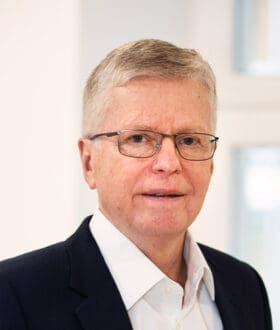Investing in the Nuclear Renaissance – What Construction Stakeholders Need to Know about Nuclear Construction Projects in Canada & the UK
October 2025As energy security and decarbonisation climb to the top of national agendas, nuclear power is entering a renaissance. For investors looking to deploy capital in long-term, stable, and strategic infrastructure, nuclear offers a compelling proposition, particularly in Canada and the United Kingdom.
These two markets are leading a new wave of nuclear development, through large-scale refurbishment, new build, and next-generation small modular reactors (SMRs). What makes them attractive is not only government support, but the legal and delivery frameworks enabling private sector participation. With major investment now flowing into nuclear projects, understanding how these are funded, procured, and delivered is key to staying competitive.
This article explores key investment considerations for construction stakeholders and capital providers active in, or entering, the UK and Canadian nuclear sectors.
Canada: public leadership, private opportunity
In Canada, the nuclear sector is uniquely shaped by strong provincial leadership, especially in Ontario, and an increasingly supportive federal investment framework:
- Ontario is home to 17 of the 19 nuclear reactors currently in operation in Canada. Ontario sources about half of its electricity from nuclear power and is leading the charge on both large-scale refurbishments and next-generation small modular reactors (SMRs).
- The Darlington SMR, currently under development, is expected to be the first grid-connected SMR in North America by 2029 and is being delivered using a modular construction approach intended to shorten timelines and reduce on-site risk.
At the federal level, Canada is bolstering nuclear through favourable investment mechanisms and support has increased significantly.
- The passing of Bill C-5 in 2025 extended clean technology tax credits to nuclear for the first time.
- The issuance of CAD $4 billion in green bonds eligible for nuclear projects in 2024, has attracted investor interest and made the financial framework for nuclear projects more competitive with renewables.
- Additional federal loans and grants are also playing a role in funding the development of nuclear projects.
The funding mix is diverse; provincial backing, federal incentives and growing private investment including pension funds and infrastructure investors. Ontario Power Generation (OPG), a Crown corporation, is the main project owner for many of the province’s nuclear builds, with private sector firms and equipment suppliers increasingly active as partners, particularly in SMR development.
Canada combines strong public support with growing financial innovation. In particular, the SMR space offers scalable opportunities.
United Kingdom: centralised strategy, innovative financing
The United Kingdom’s nuclear sector is more centrally driven, with significant public-private partnerships and unique financing mechanisms.
- The £38 billion Sizewell C nuclear plant is backed by £14.2 billion in public investment and is structured under the regulated asset base (RAB) model, which allows developers to recover costs during construction.
- Sizewell C’s backers include the British government and private investors like EDF, Centrica, La Caisse and Amber Infrastructure. Canadian investor CDPQ (an institutional investor that manages public and para-public pension plans and insurance programs in the Canadian province of Quebec) holds a stake in the project, demonstrating international confidence in the UK market.
- The UK’s SMR programme is funded through a combination of direct government grants and private-sector capital, with Rolls-Royce leading commercialisation efforts.
Canada-UK collaboration
Opportunities for transatlantic collaboration are growing:
- Cross-border collaboration on SMRs and fusion is unlocking bilateral opportunities. Regulators and supply chains in both countries are increasingly aligned, particularly around SMRs and nuclear fusion.
- Both countries are investing in modular build approaches, attracting EPC firms, digital integrators, and construction investors.
For contractors, developers, and suppliers, the path ahead is full of potential but not without complexity. From regulatory approvals to procurement models and risk allocation, success in this new nuclear era will require deep legal insight and strategic foresight.
Legal and strategic considerations
For companies entering or expanding in these markets, the following are key:
- Procurement models and delivery structures: Nuclear procurement is not standard. Delivery models vary and often involve lengthy pre-construction phases, complex partner roles, and staged risk transfer.
- Structuring of joint ventures and risk allocation: The risk allocation in EPC and O&M contracts directly affects investment security. Nuclear delivery is complex, and poorly drafted contracts can expose investors to cost overruns, liability, or delays. Standard infrastructure contracts may not adequately address nuclear-specific risks without bespoke amendments.
- Licensing and regulatory compliance: In nuclear, regulatory compliance is not just the owner’s responsibility. Contractors must also meet regulatory requirements for design, construction, safety, and reporting.
- Technology and IP risk (for SMRs and fusion): SMRs and fusion technologies involve proprietary IP and untested designs. Investment in first-of-a-kind (FOAK) projects carries higher risk but also potential for early-mover returns.
How Beale & Co can support your project
Our international construction and infrastructure team is currently advising on high-value nuclear projects in both the UK and Canada. With our London and Toronto teams, we are well placed to support clients navigating this evolving sector.
Our team advises clients on nuclear procurement, project risk, and complex delivery structures across both jurisdictions. If you are involved in nuclear procurement, design, engineering, construction or delivery in the UK and/or Canada, please contact Karina Alibhai, Sophia Harlow, or Antony Smith to discuss how we can support your next project.
Download PDF









